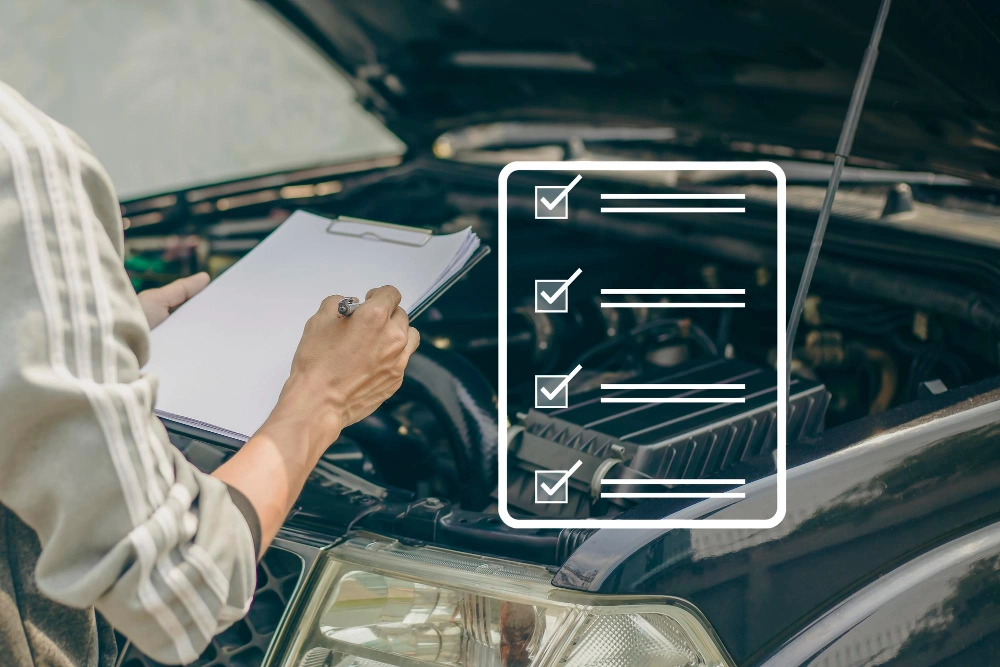1.Set a Realistic Budget—And Stick to It
Before browsing listings, determine your budget. Include costs beyond the sale price—like VRT, motor tax, insurance, and a post-purchase service.
Check Revenue.ie for up-to-date VRT rates and use a Car Finance Calculator to plan responsibly.
2.Visual Engine Check
Pop the bonnet and look for any oil or coolant leaks. Check around the oil cap, gaskets, hoses, and under the engine block. Any sign of fluid leakage—even minor—could signal deeper issues.
- Inspect for cracked hoses or corroded wiring
- Check for rust on metal components
- Look beneath the car for fresh drips or stains
3. Transmission: Smooth or Sketchy?
Whether manual or automatic, the transmission should shift smoothly. On your test drive:
- Manual: Gears should engage without resistance or grinding. Listen for noises when pressing the clutch—this may indicate wear.
- Automatic: Should shift seamlessly with no jerks, delays, or odd sounds.
👉 Find a Car and Book a test drive directly on CarsForSaleIreland.ie
4. Check Fluids: Small Task, Big Insight
Take a look at the coolant and engine oil:
- Coolant: Should be at the recommended level. Some garages can test the coolant’s condition in seconds.
- Oil: Check dipstick levels and colour. New or fresh oil is amber and translucent; black or sludgy oil is a red flag.
5. Listen to the Engine
With the car idling, listen carefully:
- Does the engine sound smooth and consistent?
- Any ticking, rattling, or metal-on-metal noise could indicate internal issues.
- Look at the exhaust. Black smoke may suggest inefficient combustion. Blue smoke usually means oil is burning.
6. Inspect Service History & Documentation
Always ask for the car’s service history. Reliable sellers often have maintenance records, parts receipts, or digital logs.
Better yet, use MotorCheck to view the car’s mileage, previous damage, and ownership history.
7. Final Steps: Negotiate and Close the Deal
If you find minor issues, don’t hesitate to negotiate. Make sure all paperwork is properly completed, including:
- Vehicle registration certificate (logbook)
- Bill of sale (signed by both parties)
- Valid NCT certificate
For official transfer guidance, visit MotorTax.ie.
Need Help? Bring a Mechanic or Visit a Garage
If you’re unsure about any checks, bring someone knowledgeable with you—or arrange a quick inspection at a local service centre. Many garages offer affordable pre-purchase inspections.
Final Thoughts
Taking the time to inspect the engine, transmission, and paperwork can save you thousands in repairs and headaches. Use this checklist as a guide and don’t rush the process.
🚗 Ready to start your search? Browse quality used cars now on CarsForSaleIreland.ie.

